#vue.js 2
Explore tagged Tumblr posts
Text
The Roadmap to Full Stack Developer Proficiency: A Comprehensive Guide
Embarking on the journey to becoming a full stack developer is an exhilarating endeavor filled with growth and challenges. Whether you're taking your first steps or seeking to elevate your skills, understanding the path ahead is crucial. In this detailed roadmap, we'll outline the stages of mastering full stack development, exploring essential milestones, competencies, and strategies to guide you through this enriching career journey.

Beginning the Journey: Novice Phase (0-6 Months)
As a novice, you're entering the realm of programming with a fresh perspective and eagerness to learn. This initial phase sets the groundwork for your progression as a full stack developer.
Grasping Programming Fundamentals:
Your journey commences with grasping the foundational elements of programming languages like HTML, CSS, and JavaScript. These are the cornerstone of web development and are essential for crafting dynamic and interactive web applications.
Familiarizing with Basic Data Structures and Algorithms:
To develop proficiency in programming, understanding fundamental data structures such as arrays, objects, and linked lists, along with algorithms like sorting and searching, is imperative. These concepts form the backbone of problem-solving in software development.
Exploring Essential Web Development Concepts:
During this phase, you'll delve into crucial web development concepts like client-server architecture, HTTP protocol, and the Document Object Model (DOM). Acquiring insights into the underlying mechanisms of web applications lays a strong foundation for tackling more intricate projects.
Advancing Forward: Intermediate Stage (6 Months - 2 Years)
As you progress beyond the basics, you'll transition into the intermediate stage, where you'll deepen your understanding and skills across various facets of full stack development.
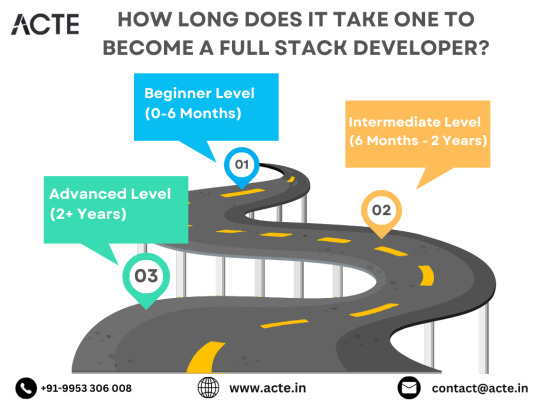
Venturing into Backend Development:
In the intermediate stage, you'll venture into backend development, honing your proficiency in server-side languages like Node.js, Python, or Java. Here, you'll learn to construct robust server-side applications, manage data storage and retrieval, and implement authentication and authorization mechanisms.
Mastering Database Management:
A pivotal aspect of backend development is comprehending databases. You'll delve into relational databases like MySQL and PostgreSQL, as well as NoSQL databases like MongoDB. Proficiency in database management systems and design principles enables the creation of scalable and efficient applications.
Exploring Frontend Frameworks and Libraries:
In addition to backend development, you'll deepen your expertise in frontend technologies. You'll explore prominent frameworks and libraries such as React, Angular, or Vue.js, streamlining the creation of interactive and responsive user interfaces.
Learning Version Control with Git:
Version control is indispensable for collaborative software development. During this phase, you'll familiarize yourself with Git, a distributed version control system, to manage your codebase, track changes, and collaborate effectively with fellow developers.
Achieving Mastery: Advanced Phase (2+ Years)
As you ascend in your journey, you'll enter the advanced phase of full stack development, where you'll refine your skills, tackle intricate challenges, and delve into specialized domains of interest.
Designing Scalable Systems:
In the advanced stage, focus shifts to designing scalable systems capable of managing substantial volumes of traffic and data. You'll explore design patterns, scalability methodologies, and cloud computing platforms like AWS, Azure, or Google Cloud.
Embracing DevOps Practices:
DevOps practices play a pivotal role in contemporary software development. You'll delve into continuous integration and continuous deployment (CI/CD) pipelines, infrastructure as code (IaC), and containerization technologies such as Docker and Kubernetes.
Specializing in Niche Areas:
With experience, you may opt to specialize in specific domains of full stack development, whether it's frontend or backend development, mobile app development, or DevOps. Specialization enables you to deepen your expertise and pursue career avenues aligned with your passions and strengths.
Conclusion:
Becoming a proficient full stack developer is a transformative journey that demands dedication, resilience, and perpetual learning. By following the roadmap outlined in this guide and maintaining a curious and adaptable mindset, you'll navigate the complexities and opportunities inherent in the realm of full stack development. Remember, mastery isn't merely about acquiring technical skills but also about fostering collaboration, embracing innovation, and contributing meaningfully to the ever-evolving landscape of technology.
#full stack developer#education#information#full stack web development#front end development#frameworks#web development#backend#full stack developer course#technology
9 notes
·
View notes
Text
Javascript Frameworks
Absolutely, JavaScript frameworks are the backbone of modern web development, empowering developers to create robust, interactive, and responsive web applications. From Angular and React to Vue.js and beyond, these frameworks have revolutionized how we build web applications. Let's delve deeper into the world of JavaScript frameworks and explore their significance, popular choices, and their impact on web development.
Evolution of JavaScript Frameworks
JavaScript frameworks emerged to streamline the development process, offering predefined structures, libraries, and functionalities. They simplify complex tasks, making it easier to create feature-rich web applications.
Angular:
Angular, developed by Google, introduced the concept of a structured front-end framework. Its two major versions, AngularJS (1.x) and Angular (2+), introduced improvements in performance, modularity, and enhanced features like two-way data binding.
React:
React, maintained by Facebook, revolutionized front-end development with its component-based architecture. Its virtual DOM implementation significantly improved rendering efficiency, making it a go-to choice for building dynamic user interfaces.
Vue.js:
Vue.js gained popularity for its simplicity and flexibility. Its progressive framework allows developers to integrate it into existing projects seamlessly. Vue's gentle learning curve and adaptability have attracted a large community of developers.
Why Use JavaScript Frameworks?
Productivity: Frameworks provide reusable components, tools, and patterns, speeding up development.
Performance: Optimized rendering, virtual DOM, and efficient data binding contribute to faster applications.
Community Support: Active communities offer resources, libraries, and solutions to common problems.
Scalability: Frameworks often come with built-in features for scaling applications as they grow.
Choosing the Right Framework
Selecting a framework depends on project requirements, team expertise, scalability needs, and community support.
Angular: Ideal for large-scale applications requiring a complete framework solution with a structured architecture.
React: Suited for building dynamic, high-traffic applications, leveraging its virtual DOM and component-based structure.
Vue.js: A versatile choice, especially for smaller to medium-sized projects, due to its simplicity and easy integration.
The Future of JavaScript Frameworks
The landscape of JavaScript frameworks continues to evolve with updates, new releases, and the emergence of alternative frameworks. There's a trend toward optimizing performance, reducing bundle sizes, and improving developer experience.
Web Components and Micro-Frontends:
The rise of Web Components and micro-frontends is changing how developers architect applications. These technologies enable building modular, reusable components that can be utilized across frameworks and projects.
Framework Agnosticism:
Developers are exploring ways to combine different frameworks or use libraries like Svelte and Alpine.js to achieve optimal performance and flexibility while minimizing the constraints of a single framework.
Conclusion
JavaScript frameworks have significantly shaped the web development landscape, offering diverse options to cater to varying project needs. As technology evolves, the emphasis shifts towards performance, scalability, and adaptability, driving innovation in the realm of JavaScript frameworks.
Ultimately, the choice of a framework depends on the project's specific requirements, team expertise, and long-term goals. Understanding the strengths and trade-offs of each framework empowers developers to make informed decisions, ensuring the successful creation of modern, efficient web applications.
7 notes
·
View notes
Text
java full stack
A Java Full Stack Developer is proficient in both front-end and back-end development, using Java for server-side (backend) programming. Here's a comprehensive guide to becoming a Java Full Stack Developer:
1. Core Java
Fundamentals: Object-Oriented Programming, Data Types, Variables, Arrays, Operators, Control Statements.
Advanced Topics: Exception Handling, Collections Framework, Streams, Lambda Expressions, Multithreading.
2. Front-End Development
HTML: Structure of web pages, Semantic HTML.
CSS: Styling, Flexbox, Grid, Responsive Design.
JavaScript: ES6+, DOM Manipulation, Fetch API, Event Handling.
Frameworks/Libraries:
React: Components, State, Props, Hooks, Context API, Router.
Angular: Modules, Components, Services, Directives, Dependency Injection.
Vue.js: Directives, Components, Vue Router, Vuex for state management.
3. Back-End Development
Java Frameworks:
Spring: Core, Boot, MVC, Data JPA, Security, Rest.
Hibernate: ORM (Object-Relational Mapping) framework.
Building REST APIs: Using Spring Boot to build scalable and maintainable REST APIs.
4. Database Management
SQL Databases: MySQL, PostgreSQL (CRUD operations, Joins, Indexing).
NoSQL Databases: MongoDB (CRUD operations, Aggregation).
5. Version Control/Git
Basic Git commands: clone, pull, push, commit, branch, merge.
Platforms: GitHub, GitLab, Bitbucket.
6. Build Tools
Maven: Dependency management, Project building.
Gradle: Advanced build tool with Groovy-based DSL.
7. Testing
Unit Testing: JUnit, Mockito.
Integration Testing: Using Spring Test.
8. DevOps (Optional but beneficial)
Containerization: Docker (Creating, managing containers).
CI/CD: Jenkins, GitHub Actions.
Cloud Services: AWS, Azure (Basics of deployment).
9. Soft Skills
Problem-Solving: Algorithms and Data Structures.
Communication: Working in teams, Agile/Scrum methodologies.
Project Management: Basic understanding of managing projects and tasks.
Learning Path
Start with Core Java: Master the basics before moving to advanced concepts.
Learn Front-End Basics: HTML, CSS, JavaScript.
Move to Frameworks: Choose one front-end framework (React/Angular/Vue.js).
Back-End Development: Dive into Spring and Hibernate.
Database Knowledge: Learn both SQL and NoSQL databases.
Version Control: Get comfortable with Git.
Testing and DevOps: Understand the basics of testing and deployment.
Resources
Books:
Effective Java by Joshua Bloch.
Java: The Complete Reference by Herbert Schildt.
Head First Java by Kathy Sierra & Bert Bates.
Online Courses:
Coursera, Udemy, Pluralsight (Java, Spring, React/Angular/Vue.js).
FreeCodeCamp, Codecademy (HTML, CSS, JavaScript).
Documentation:
Official documentation for Java, Spring, React, Angular, and Vue.js.
Community and Practice
GitHub: Explore open-source projects.
Stack Overflow: Participate in discussions and problem-solving.
Coding Challenges: LeetCode, HackerRank, CodeWars for practice.
By mastering these areas, you'll be well-equipped to handle the diverse responsibilities of a Java Full Stack Developer.
visit https://www.izeoninnovative.com/izeon/
2 notes
·
View notes
Text
Top 10 Front-End Frameworks and Libraries for 2024
As the web development landscape continues to evolve, staying updated with the latest front-end frameworks and libraries is crucial for any developer. Whether you're a seasoned pro or just starting out, knowing which tools to use can significantly impact your productivity and the quality of your projects. In this post, we’ll explore the top 10 front-end frameworks and libraries that are set to dominate in 2024.
1. React
React remains one of the most popular front-end libraries, known for its simplicity and flexibility.
Key Features of React
Component-Based Architecture: Reusable components make development efficient and manageable.
Virtual DOM: Enhances performance by minimizing direct DOM manipulation.
Strong Community Support: A vast ecosystem of tools, libraries, and tutorials.
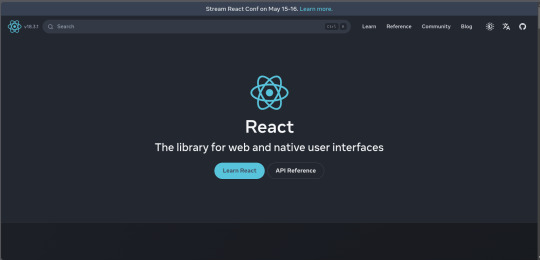
2. Angular
Angular, backed by Google, is a powerful framework for building dynamic single-page applications (SPAs).
Why Choose Angular?
Two-Way Data Binding: Synchronizes data between the model and the view.
Dependency Injection: Improves code maintainability and testability.
Comprehensive Documentation: Extensive resources for learning and troubleshooting.
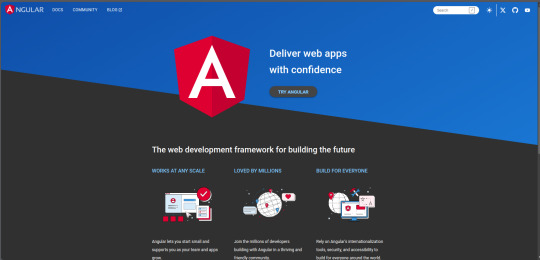
3. Vue.js
Vue.js has gained popularity due to its gentle learning curve and versatility.
Advantages of Vue.js
Reactive Data Binding: Simplifies state management.
Single-File Components: Encapsulate HTML, CSS, and JavaScript in one file.
Flexibility: Can be used for both large-scale and small-scale applications.
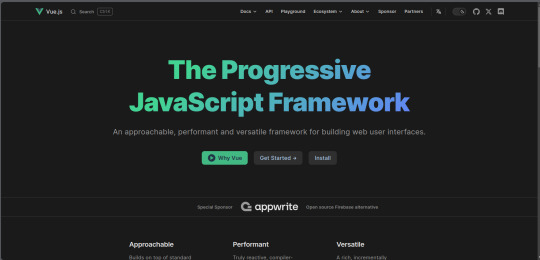
4. Svelte
Svelte is a relatively new player that compiles components into highly efficient vanilla JavaScript at build time.
Svelte’s Standout Features
No Virtual DOM: Directly manipulates the DOM for better performance.
Less Boilerplate: Cleaner code with minimal overhead.
Ease of Use: Intuitive and straightforward syntax.
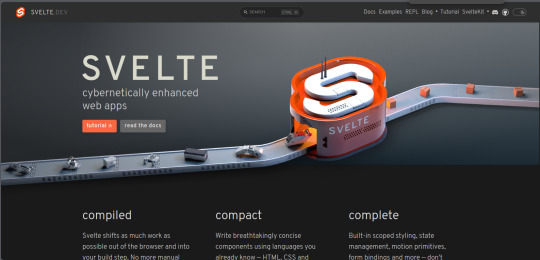
5. Bootstrap
Bootstrap is a front-end framework that provides pre-designed components and a responsive grid system.
Benefits of Using Bootstrap
Responsive Design: Ensures your site looks great on all devices.
Pre-Styled Components: Saves time with ready-to-use UI elements.
Customizable: Easily customize with Sass variables and Bootstrap’s extensive options.
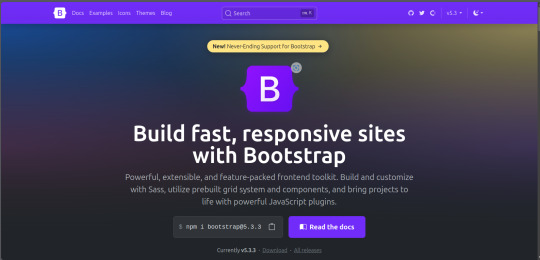
6. Tailwind CSS
Tailwind CSS is a utility-first CSS framework that allows for rapid UI development.
Tailwind CSS Features
Utility-First Approach: Use utility classes directly in your HTML.
Customizable: Extensive configuration options to suit your project’s needs.
Consistency: Enforces a consistent design language across your project.
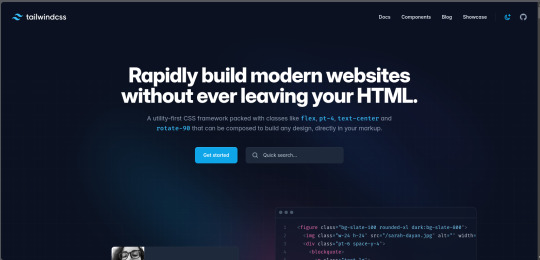
7. Ember.js
Ember.js is a robust framework for building ambitious web applications.
Why Ember.js Stands Out
Convention over Configuration: Reduces the amount of decision-making and boilerplate code.
Strong Routing: Powerful routing capabilities for managing application state.
Productivity: Focuses on developer productivity with built-in best practices.
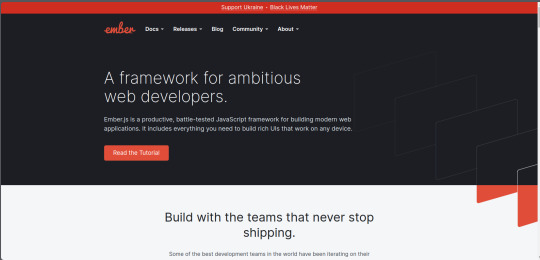
8. Alpine.js
Alpine.js offers a minimal and lightweight way to add interactivity to your websites.
Key Features of Alpine.js
Lightweight: Small footprint with only a few kilobytes.
Declarative Syntax: Similar to Vue.js, making it easy to understand and implement.
Ease of Integration: Can be easily integrated into existing projects.
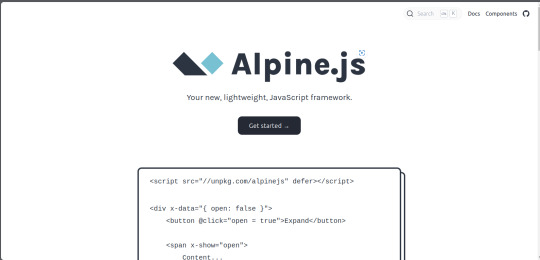
9. Next.js
Next.js is a popular React framework that enables server-side rendering and static site generation.
Benefits of Using Next.js
Server-Side Rendering (SSR): Improves performance and SEO by rendering pages on the server.
Static Site Generation (SSG): Pre-renders pages at build time for fast load times.
API Routes: Allows you to create API endpoints within your application.
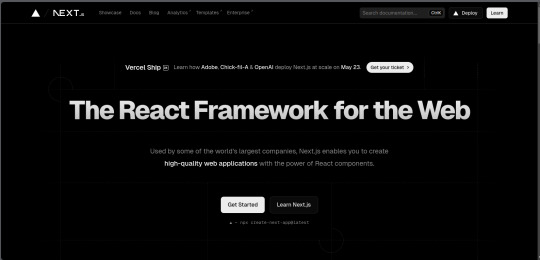
10. Lit
Lit is a simple library for building fast, lightweight web components.
Advantages of Lit
Web Components: Embraces the web components standard for reusable, encapsulated HTML elements.
Performance: Lightweight and highly performant.
Simple API: Easy to learn and use with a minimal API surface.
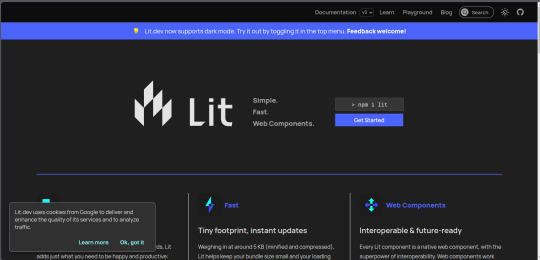
Conclusion
Choosing the right front-end framework or library can significantly impact your workflow and the quality of your projects. Whether you prefer the flexibility of React, the structure of Angular, or the simplicity of Svelte, there's a tool out there to suit your needs.
Final Tips for Selecting a Framework or Library
Project Requirements: Consider the specific needs of your project.
Community and Support: Look for frameworks with strong community support and documentation.
Learning Curve: Choose a tool that matches your current skill level and the time you have available to learn.
By staying informed about the latest tools and trends, you can ensure that your skills remain relevant and that you can deliver the best possible results in your projects. Happy coding!
Remember, the best tool is the one that helps you get the job done efficiently and effectively. So, dive into these frameworks and libraries, and take your front-end development skills to the next level!
Share Your Thoughts
I'm curious to know your thoughts on these front-end frameworks and libraries. Have you used any of them in your projects? Which one is your favorite, and why? Share your experiences and insights in the comments below.👇
2 notes
·
View notes
Text
Navigating the Digital Frontier: Choosing the Right Web Development Company in India
In the rapidly evolving digital landscape, having a strong online presence is no longer optional—it's essential. Whether you're a budding startup or an established enterprise, the foundation of your online success hinges on the quality of your website. This is where choosing the best web development company in India becomes crucial.
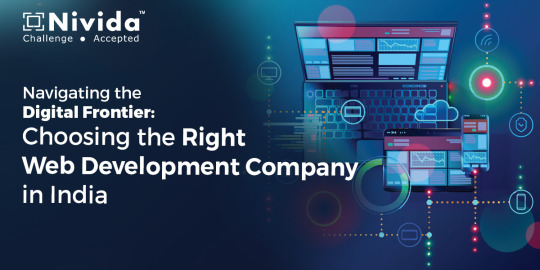
Why India?
India has emerged as a global hub for technology and innovation, boasting a pool of highly skilled developers and cutting-edge technology solutions. Companies worldwide are turning to India for their web development needs due to its cost-effective services, timely delivery, and exceptional quality.
What to Look for in the Best Web Development Company in India
Selecting the right web development partner is a critical decision that can shape the future of your business. Here are some key factors to consider:
1. Expertise and Experience
Experience is a testament to a company's ability to deliver quality services. Look for a web development company with a robust portfolio that showcases their expertise across various industries. A company that has successfully executed diverse projects is more likely to understand and meet your unique requirements.
2. Custom Solutions
The best web development company in India will offer customized solutions tailored to your business needs. Avoid firms that rely on one-size-fits-all templates. Your website should reflect your brand's identity and cater to your target audience.
3. Technology Stack
Ensure the company is proficient in the latest technologies and development frameworks. Whether it's HTML5, CSS3, JavaScript, or advanced frameworks like React, Angular, and Vue.js, the right technology stack can significantly enhance your website's performance and user experience.
4. Client Reviews and Testimonials
Reputation matters. Check client reviews and testimonials to gauge the company's reliability and service quality. Platforms like Clutch, Upwork, and Google Reviews can provide valuable insights into the experiences of past clients.
5. Post-Launch Support
A reliable web development company doesn't just deliver the project and disappear. Look for firms that offer robust post-launch support and maintenance services to ensure your website remains up-to-date and functional.
Spotlight on Gujarat: The Best Web Development Company in Gujarat
While India, as a whole, is a powerhouse of web development talent, certain regions stand out for their exceptional contributions. Gujarat is one such region, known for its thriving IT industry and innovation-driven approach.
Why Choose a Web Development Company in Gujarat?
Skilled Workforce: Gujarat boasts a large pool of highly skilled developers who are adept at the latest technologies.
Cost-Effective Services: Companies in Gujarat offer competitive pricing without compromising on quality, making it an attractive option for businesses globally.
Robust Infrastructure: With state-of-the-art infrastructure and a conducive business environment, Gujarat is home to some of the best web development companies in India.
Conclusion
Navigating the digital frontier requires a reliable and skilled partner. Whether you're looking for the best web development company in India or the best web development company in Gujarat, the key lies in thorough research and due diligence. By focusing on expertise, customization, technology proficiency, client feedback, and post-launch support, you can ensure that your web development journey is smooth and successful.
Investing in the right web development company is not just about building a website; it's about creating a digital presence that drives growth, engages users, and stands out in a competitive market. Make your choice wisely and watch your business thrive in the digital age.
4 notes
·
View notes
Text
**Demystifying the Art of Web Development: From Code to Creation**
In today’s digital age, the world is connected through the vast web of the internet, and at the heart of it lies the art of web development. From simple static web pages to complex interactive platforms, web development plays a pivotal role in shaping our online experiences. In this article, we delve into the realm of web development, exploring its core concepts, tools, and the magic that transforms lines of code into stunning digital creations.
**Understanding Web Development: A Multifaceted Discipline**
Web development refers to the process of building and maintaining websites or web applications. It encompasses a wide array of skills and disciplines, including front-end development, back-end development, and full-stack development.
**1. Front-end Development: Creating the User Interface**

**2. Back-end Development: The Invisible Backbone**
Back-end development, on the other hand, focuses on the behind-the-scenes functionality of a website. Back-end developers work on servers, databases, and applications that power the website and handle data processing. They create the logic that enables the website to function smoothly, handle user authentication, manage databases, and handle various server-side operations.
**3. Full-stack Development: The Jack-of-All-Trades**
Full-stack developers are proficient in both front-end and back-end development, making them the jack-of-all-trades in web development. They possess a comprehensive understanding of how all the pieces fit together, allowing them to develop entire web applications from start to finish.
**The Building Blocks: Technologies in Web Development**
Web development relies on a multitude of technologies and tools that continue to evolve with the ever-changing demands of the digital landscape. Some of the popular technologies used in web development include:
- **HTML (Hypertext Markup Language):** The fundamental language for creating the structure and content of web pages.
- **CSS (Cascading Style Sheets):** Used to add style and formatting to HTML elements, enhancing the visual appeal of websites.
- **JavaScript:** The programming language responsible for adding interactivity and dynamic features to web pages.
- **Front-end Frameworks and Libraries:** Popular frameworks like React, Angular, and Vue.js simplify front-end development and enhance productivity.
- **Back-end Frameworks:** Tools like Node.js, Django, and Ruby on Rails streamline back-end development and facilitate server-side operations.
- **Databases:** Technologies like MySQL, MongoDB, and PostgreSQL handle data storage and retrieval.
**The Art of Web Development: From Vision to Reality**
Web development is more than just writing lines of code; it’s an art that requires creativity, problem-solving, and constant learning. It involves collaborating with designers, understanding clients’ needs, and transforming abstract ideas into tangible, functional websites.

**Conclusion: Building the Digital Landscape**
In conclusion, web development is the backbone of our online world, transforming ideas and concepts into tangible web experiences. The collaboration between front-end, back-end, and full-stack developers results in the creation of websites and applications that shape the way we interact with the digital realm.
Whether you’re a seasoned developer or an aspiring one, web development offers a thrilling journey of exploration and innovation. So, if you’re looking to leave your mark on the digital landscape, consider delving into the exciting world of web development — where code transforms into captivating creations, and the possibilities are boundless.
*Remember, every website you visit, every app you use, and every digital experience you encounter is a masterpiece crafted by the hands of web developers — the architects of our connected world.*
Like this blog if it has helped you.
2 notes
·
View notes
Quote
宮崎県の統計システムの公募がなかなか攻めてます。 攻めてるポイント1: 既にある程度動く試作品が県からgithubで提示されてる。機能全てを職員である落合さんが一人で作成。つまり、「おまえらこれより良いのを作れよ」という挑戦状が叩きつけられている! > 県からの試作品(プロトタイプ)の提示 > データ可視化機能部分は試作品を県から WEB 上(GitHub)で提示する。 (https://github.com/mtoukei/statbox2 )受託者は試作品と同機能またはそれ以上の機能を実現すること。なお、試作品に含まれていない機能を提案することを妨げない。 攻めてるポイント2. ECMAScript ver.6 以上、とか、Babel とか Vue.js とか、ライブラリの指定が細かい。ちゃんとモダンなフレームワーク使えよ。と。
新みやざき統計BOX構築業務企画提案競技を実施します
2 notes
·
View notes
Text
Laravel Training Institute in Indore – Build Scalable Web Applications with Expert Guidance
Introduction: Step Into the Future of Web Development with Laravel
Laravel is among the most powerful PHP frameworks used for building dynamic, secure, and scalable web applications. Whether you're a budding developer or a working professional aiming to upgrade your skills, joining a structured Laravel training in Indore can significantly boost your career. Infograins TCS helps you build a strong foundation in Laravel with real-time projects, hands-on sessions, and industry exposure.

Overview: What Our Laravel Training Program Covers
At Infograins TCS, we offer a comprehensive Laravel training program designed to help learners understand both fundamental and advanced concepts. From routing, middleware, and templating to Eloquent ORM and RESTful APIs, every essential topic is covered under expert supervision. Our course structure is practical and job-oriented, making us a preferred Laravel training institute in Indore for aspiring developers.
Pros: Why Laravel Training Is a Game-Changer
Industry-Relevant Curriculum – Our syllabus is aligned with current market demands, covering real-time scenarios.
Hands-On Projects – Practical sessions and live assignments ensure skill development and confidence.
Career Support – Resume building, mock interviews, and job placement support are part of the program.
Expert Faculty – Learn from industry professionals with real project experience in Laravel and PHP.
This Laravel training in Indore is perfect for those seeking hands-on experience with a framework that powers high-performing web apps.
Why Choose Us: Your Learning Partner at Every Step
Infograins TCS is known for its commitment to quality education and student satisfaction. With a focus on personalized learning and practical training, we ensure that every student is ready to face real-world development challenges. As a top Laravel training institute in Indore, we emphasize industry-ready skills that make our learners job-ready from day one.
Our More Courses: Diversify Your IT Skills
Apart from Laravel, we offer a range of career-boosting IT training programs including:
PHP Core & Advanced Training
Full Stack Development
Node.js & Express Training
Python & Django Training
Front-End Technologies (React, Angular, Vue.js) These programs are designed to make you a versatile developer with in-demand technical skills.
Why We Are a Helping Partner in Your Career Growth
At Infograins TCS, we’re more than a training institute—we’re your career partner. From counseling to course completion, we guide you every step of the way. Our strong industry network and placement support system ensure you don't just learn Laravel but also land a job that values your skills and dedication.
FAQS : Frequently Asked Questions
1. What is the duration of the Laravel training course? Our Laravel training course typically spans 6 to 8 weeks, with both weekday and weekend batches available for your convenience.
2. Do I need prior knowledge of PHP before joining? Yes, a basic understanding of PHP is recommended since Laravel is a PHP framework. We also offer a PHP fundamentals course for beginners.
3. Will I get to work on live projects during the course? Absolutely! Our course includes multiple live projects and assignments to provide practical exposure and build real-world coding confidence.
4. Is there placement assistance after course completion? Yes, we provide job placement support including resume preparation, mock interviews, and connections with hiring partners.
5. Can I opt for online Laravel training sessions? Yes, we offer both classroom and online training modes to cater to local and remote learners.
Ready to Master Laravel with Experts?
If you're looking to accelerate your web development career, now’s the time to enroll in Laravel training that delivers results. Infograins TCS offers the perfect platform to gain practical knowledge and industry skills. Visit Infograins TCS to register and take the first step toward becoming a professional Laravel developer.
0 notes
Text
Top Programming Languages for Web App Development in 2025

In 2025, Web App Development continues to evolve rapidly, with businesses seeking high-performing, scalable, and secure digital solutions. Whether you're a startup looking for MVP development or an enterprise modernizing legacy systems, choosing the right programming language can significantly affect your application's success. As a Web App Development Company in the UK, we understand that the tech stack determines not just performance but also the Web App Development Cost, team scalability, and future maintenance.
1. JavaScript and TypeScript: Still Reigning Supreme
JavaScript remains the backbone of modern web apps. Combined with powerful frameworks like React, Angular, or Vue.js, it ensures rich UI/UX experiences. TypeScript, a superset of JavaScript, has gained huge traction in 2025 due to its static typing and better scalability for larger projects. If you're planning to hire Web App Development developers, a JavaScript- or TypeScript-based stack is a safe, future-proof choice.
2. Python: Great for Rapid Development
Python continues to be a go-to choice for startups and SMEs due to its simplicity and wide community support. Frameworks like Django and Flask enable fast development with clean, maintainable code. Python is particularly useful for integrating AI and ML capabilities into web apps—an area many Web App Development companies are focusing on this year.
3. Ruby: Ideal for MVPs and Agile Web Development
Ruby, particularly Ruby on Rails, is still favored for rapid MVP development and agile web projects. It’s perfect for businesses that want to launch quickly and iterate based on user feedback. As a Web App Development Service, we often recommend Ruby to clients with evolving product visions and short go-to-market timelines.
Book an Appointment with Our Experts
Let’s discuss your project requirements, budget, and timeline to help you choose the best language and tech stack.
4. Go (Golang): The Performance-Oriented Choice
Go is gaining popularity for backend development where performance and concurrency are critical. Companies that need scalable microservices and high-performing APIs are increasingly turning to Go. If you're aiming to optimize backend speed without sacrificing developer productivity, Go is worth considering.
5. PHP (with Laravel): Still Relevant in 2025
While PHP may seem outdated to some, frameworks like Laravel have kept it modern and efficient. It's a solid option for content-driven websites, CRMs, and small to medium-sized web applications. Many Web App Development Companies still rely on PHP for specific types of projects due to its stability and large pool of available developers.
6. Kotlin and Swift (for Cross-Platform Web & Mobile)
Though traditionally mobile languages, Kotlin (with Kotlin Multiplatform) and Swift are now seeing some traction in full-stack and cross-platform environments. They are emerging in hybrid Web App Development Services where seamless interaction between mobile and web platforms is critical.
How to Choose the Right Language?
Choosing the right programming language depends on:
The type of application (MVP, enterprise-grade, eCommerce, etc.)
Your budget and timeline
Availability of developers
Long-term maintenance
That’s why working with an experienced Web App Development Company can make all the difference. A reliable partner will help balance tech choices with business goals and offer transparent Web App Development Cost estimates.
Whether you're looking to hire Web App Development developers for a custom solution or want a complete product built from scratch, it's crucial to align your language and framework choice with your growth strategy. Our Web App Development Company in the UK offers tailored Web App Development Services that fit your needs, budget, and long-term vision.
0 notes
Text
Decoding the Full Stack Developer: Beyond Just Coding Skills
When we hear the term Full Stack Developer, the first image that comes to mind is often a coding wizard—someone who can write flawless code in both frontend and backend languages. But in reality, being a Full Stack Developer is much more than juggling JavaScript, databases, and frameworks. It's about adaptability, problem-solving, communication, and having a deep understanding of how digital products come to life.
In today’s fast-paced tech world, decoding the Full Stack Developer means understanding the full spectrum of their abilities—beyond just writing code. It’s about their mindset, their collaboration style, and the unique value they bring to modern development teams.
What is a Full Stack Developer—Really?
At its most basic definition, a Full Stack Developer is someone who can work on both the front end (what users see) and the back end (the server, database, and application logic) of a web application. But what sets a great Full Stack Developer apart isn't just technical fluency—it's their ability to bridge the gap between design, development, and user experience.
Beyond Coding: The Real Skills of a Full Stack Developer
While technical knowledge is essential, companies today are seeking developers who bring more to the table. Here’s what truly defines a well-rounded Full Stack Developer:
1. Holistic Problem Solving
A Full Stack Developer looks at the bigger picture. Instead of focusing only on isolated technical problems, they ask:
How will this feature affect the user experience?
Can this backend architecture scale as traffic increases?
Is there a more efficient way to implement this?
2. Communication and Collaboration
Full Stack Developers often act as the bridge between frontend and backend teams, as well as designers and project managers. This requires:
The ability to translate technical ideas into simple language
Empathy for team members with different skill sets
Openness to feedback and continuous learning
3. Business Mindset
Truly impactful developers understand the "why" behind their work. They think:
How does this feature help the business grow?
Will this implementation improve conversion or retention?
Is this approach cost-effective?
4. Adaptability
Tech is always evolving. A successful Full Stack Developer is a lifelong learner who stays updated with new frameworks, tools, and methodologies.
Technical Proficiency: Still the Foundation
Of course, strong coding skills remain a core part of being a Full Stack Developer. Here are just some of the technical areas they typically master:
Frontend: HTML, CSS, JavaScript, React, Angular, or Vue.js
Backend: Node.js, Express, Python, Ruby on Rails, or PHP
Databases: MySQL, MongoDB, PostgreSQL
Version Control: Git and GitHub
DevOps & Deployment: Docker, Kubernetes, CI/CD pipelines, AWS or Azure
But what distinguishes a standout Full Stack Developer isn’t how many tools they know—it’s how well they apply them to real-world problems.
Why the Role Matters More Than Ever
In startups and agile teams, having someone who understands both ends of the tech stack can:
Speed up development cycles
Reduce communication gaps
Enable rapid prototyping
Make it easier to scale applications over time
This flexibility makes Full Stack Developers extremely valuable. They're often the "glue" holding cross-functional teams together, able to jump into any layer of the product when needed.
A Day in the Life of a Full Stack Developer
To understand this further, imagine this scenario:
It’s 9:00 AM. A Full Stack Developer starts their day reviewing pull requests. At 10:30, they join a stand-up meeting with designers and project managers. By noon, they’re debugging an API endpoint issue. After lunch, they switch to styling a new UI component. And before the day ends, they brainstorm database optimization strategies for an upcoming product feature.
It’s not just a job—it’s a dynamic puzzle, and Full Stack Developers thrive on finding creative, holistic solutions.
Conclusion: Decoding the Full Stack Developer
Decoding the Full Stack Developer: Beyond Just Coding Skills is essential for businesses and aspiring developers alike. It’s about understanding that this role blends logic, creativity, communication, and empathy.
Today’s Full Stack Developer is more than a technical multitasker—they are strategic thinkers, empathetic teammates, and flexible builders who can shape the entire lifecycle of a digital product.
If you're looking to become one—or hire one—don’t just look at the resume. Look at the mindset, curiosity, and willingness to grow. Because when you decode the Full Stack Developer, you’ll find someone who brings full-spectrum value to the digital world.
0 notes
Text
Navigating the Full Stack: A Holistic Approach to Web Development Mastery
Introduction: In the ever-evolving world of web development, full stack developers are the architects behind the seamless integration of frontend and backend technologies. Excelling in both realms is essential for creating dynamic, user-centric web applications. In this comprehensive exploration, we'll embark on a journey through the multifaceted landscape of full stack development, uncovering the intricacies of crafting compelling user interfaces and managing robust backend systems.

Frontend Development: Crafting Engaging User Experiences
1. Markup and Styling Mastery:
HTML (Hypertext Markup Language): Serves as the foundation for structuring web content, providing the framework for user interaction.
CSS (Cascading Style Sheets): Dictates the visual presentation of HTML elements, enhancing the aesthetic appeal and usability of web interfaces.
2. Dynamic Scripting Languages:
JavaScript: Empowers frontend developers to add interactivity and responsiveness to web applications, facilitating seamless user experiences.
Frontend Frameworks and Libraries: Harness the power of frameworks like React, Angular, or Vue.js to streamline development and enhance code maintainability.
3. Responsive Design Principles:
Ensure web applications are accessible and user-friendly across various devices and screen sizes.
Implement responsive design techniques to adapt layout and content dynamically, optimizing user experiences for all users.
4. User-Centric Design Practices:
Employ UX design methodologies to create intuitive interfaces that prioritize user needs and preferences.
Conduct usability testing and gather feedback to refine interface designs and enhance overall user satisfaction.

Backend Development: Managing Data and Logic
1. Server-side Proficiency:
Backend Programming Languages: Utilize languages like Node.js, Python, Ruby, or Java to implement server-side logic and handle client requests.
Server Frameworks and Tools: Leverage frameworks such as Express.js, Django, or Ruby on Rails to expedite backend development and ensure scalability.
2. Effective Database Management:
Relational and Non-relational Databases: Employ databases like MySQL, PostgreSQL, MongoDB, or Firebase to store and manage structured and unstructured data efficiently.
API Development: Design and implement RESTful or GraphQL APIs to facilitate communication between the frontend and backend components of web applications.
3. Security and Performance Optimization:
Implement robust security measures to safeguard user data and protect against common vulnerabilities.
Optimize backend performance through techniques such as caching, query optimization, and load balancing, ensuring optimal application responsiveness.
Full Stack Development: Harmonizing Frontend and Backend
1. Seamless Integration of Technologies:
Cultivate expertise in both frontend and backend technologies to facilitate seamless communication and collaboration across the development stack.
Bridge the gap between user interface design and backend functionality to deliver cohesive and impactful web experiences.
2. Agile Project Management and Collaboration:
Collaborate effectively with cross-functional teams, including designers, product managers, and fellow developers, to plan, execute, and deploy web projects.
Utilize agile methodologies and version control systems like Git to streamline collaboration and track project progress efficiently.
3. Lifelong Learning and Adaptation:
Embrace a growth mindset and prioritize continuous learning to stay abreast of emerging technologies and industry best practices.
Engage with online communities, attend workshops, and pursue ongoing education opportunities to expand skill sets and remain competitive in the evolving field of web development.
Conclusion: Mastering full stack development requires a multifaceted skill set encompassing frontend design principles, backend architecture, and effective collaboration. By embracing a holistic approach to web development, full stack developers can craft immersive user experiences, optimize backend functionality, and navigate the complexities of modern web development with confidence and proficiency.
#full stack developer#education#information#full stack web development#front end development#frameworks#web development#backend#full stack developer course#technology
2 notes
·
View notes
Text
Best Frontend Development Frameworks 2025: A Guide to the Top Tools and Trends
Frontend development is evolving rapidly, driven by new frameworks, libraries, and user experience demands. As businesses aim for high-performance web applications, choosing the right frontend framework is crucial. In 2025, developers have a variety of powerful frameworks to build scalable, efficient, and visually appealing applications. This article explores the best frontend development frameworks 2025, analyzing their features, advantages, and use cases.
Additionally, we will highlight essential frontend development tools and libraries that complement these frameworks, helping developers optimize workflows and enhance productivity.
1. Why Choosing the Right Frontend Framework Matters
A frontend framework determines how a web application functions, how it scales, and the user experience it delivers. With technology constantly advancing, developers must stay ahead by adopting frameworks that offer performance optimization, faster development, and seamless integrations.
The right framework should:
Support reusability and modularity for faster development cycles.
Enhance performance and speed, ensuring smooth rendering and interactions.
Offer strong community support and continuous updates.
Be compatible with modern technologies like AI, server-side rendering (SSR), and WebAssembly.
2. Best Frontend Development Frameworks 2025
a) React.js – The Powerhouse Continues
React.js remains one of the most widely used frontend frameworks, thanks to its component-based architecture and vast ecosystem. Backed by Meta (formerly Facebook), React.js continues to evolve with new features enhancing performance and developer experience.
Why Choose React in 2025?
Server Components: React’s server-side rendering (SSR) capabilities make applications load faster.
Concurrent Rendering: The latest React updates optimize page rendering and responsiveness.
Rich Ecosystem: A vast selection of third-party libraries and state management tools like Redux and Recoil.
Best Use Cases
Single Page Applications (SPAs)
E-commerce platforms
Social media applications
b) Vue.js – The Developer-Friendly Framework
Vue.js has gained popularity for its simplicity and flexibility, making it an excellent choice for both small-scale and enterprise applications. Vue 4, expected in 2025, promises even better performance and state management capabilities.
Why Choose Vue.js in 2025?
Lightweight and Fast: Vue’s optimized reactivity system improves rendering speed.
Easy Learning Curve: Developers can quickly adapt to Vue due to its intuitive API.
Improved Composition API: Enhances code reusability and scalability.
Best Use Cases
Progressive Web Applications (PWAs)
Lightweight dashboards and admin panels
Small-to-medium-scale business websites
c) Angular – The Enterprise-Grade Framework
Angular continues to be the go-to choice for enterprise applications. Developed by Google, Angular’s TypeScript-based structure ensures maintainability, security, and scalability. The latest updates in Angular 2025 bring improved performance and a better developer experience.
Why Choose Angular in 2025?
Modular Architecture: Supports large-scale applications with maintainable codebases.
Improved SSR with Angular Universal: Faster page loads for SEO-optimized web apps.
Strong CLI Support: Automates repetitive tasks and enhances developer productivity.
Best Use Cases
Enterprise-grade applications
Banking and financial platforms
Healthcare and government systems
d) Svelte – The Future of Lightweight Web Apps
Svelte is gaining traction as a modern alternative to traditional frameworks. Unlike React or Vue, Svelte compiles components into highly optimized JavaScript, eliminating the need for a virtual DOM.
Why Choose Svelte in 2025?
No Virtual DOM Overhead: Results in faster rendering and better performance.
Smaller Bundle Sizes: Reduces load time and improves page speed.
Reactive State Management: Simplifies handling UI changes without external libraries.
Best Use Cases
Interactive web applications
News and content-heavy websites
High-performance web experiences
e) Next.js – The Leader in Server-Side Rendering (SSR)
Next.js, built on top of React, is redefining frontend development with its powerful server-side rendering capabilities. With the rise of SSR and static site generation (SSG), Next.js remains a top contender in 2025.
Why Choose Next.js in 2025?
Hybrid Rendering: Supports both SSR and SSG for dynamic applications.
Optimized Image Loading: Built-in image optimization enhances site speed.
Edge Computing Support: Deploy apps closer to users for low-latency performance.
Best Use Cases
SEO-friendly websites
Content-heavy platforms like blogs and news websites
E-commerce applications with dynamic content
3. Supporting Frontend Development Tools and Libraries
While frameworks provide the structure for web applications, developers rely on various frontend development tools and libraries to optimize workflows. Some essential tools include:
Webpack: A powerful bundler that optimizes assets and improves page load speeds.
Vite: A next-generation build tool offering faster development and hot module replacement.
Storybook: A UI development environment for building and testing frontend components.
Lodash: A utility library that simplifies JavaScript functions.
These tools help streamline frontend development, ensuring better performance and maintainability.
4. Future Trends in Frontend Development
With rapid advancements in web technologies, here are some key trends shaping the future of frontend development:
a) WebAssembly (WASM) for High-Performance Web Apps
WebAssembly is revolutionizing frontend development by allowing developers to run high-performance code in web browsers, making web applications as fast as native applications.
b) AI-Powered UI/UX Enhancements
AI-driven design tools and automated accessibility testing are becoming integral to frontend development, improving user experience across devices.
c) Headless CMS Integration
More developers are adopting headless CMS platforms like Strapi and Contentful for better content management and scalability.
d) Jamstack Architecture
With a focus on speed and security, Jamstack (JavaScript, APIs, and Markup) continues to rise in popularity for developing static and hybrid applications.
Choosing the right framework is critical for building efficient and future-ready web applications. The best frontend development frameworks 2025—including React.js, Vue.js, Angular, Svelte, and Next.js—offer powerful features that cater to various business and technical needs.
Pairing these frameworks with the right frontend development tools and libraries ensures seamless development, enhanced performance, and optimized user experience. As technology evolves, staying updated with the latest trends and frameworks will help developers build cutting-edge web applications that stand out in the digital landscape.
0 notes
Text
Front end Engineer- Vue.JS/React/Angular
Job RequirementsFrontend Engineer Vue.JS/React/AngularExperience : 7+ yearsRequired Skills : 7+ years of working experience in web Technologies. 2+ Years Proven working experience in Vue.JS/React/Angular .Good knowledge in HTML/ CSS, JavaScript, Typescript, XML, jQuery Adequate knowledge of relational database systems, Object Oriented Programming and web application development Desired…
0 notes
Text
Ngôn Ngữ Lập Trình Là Gì? Top Ngôn Ngữ Lập Trình Phổ Biến Nhất 2025
Ngôn ngữ lập trình là công cụ quan trọng trong thời đại công nghệ số, giúp con người giao tiếp với máy tính để tạo ra các ứng dụng, website, trò chơi, hay thậm chí là trí tuệ nhân tạo. Với sự phát triển không ngừng của ngành công nghệ thông tin, việc hiểu rõ ngôn ngữ lập trình là gì và nắm bắt các ngôn ngữ lập trình phổ biến sẽ giúp bạn đón đầu xu hướng nghề nghiệp. Trong bài viết này, chúng ta sẽ tìm hiểu chi tiết về ngôn ngữ lập trình, vai trò của chúng, và top các ngôn ngữ lập trình được ưa chuộng nhất hiện nay.
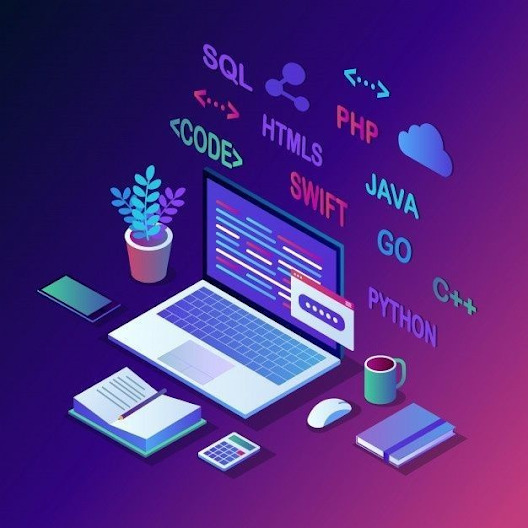
Ngôn ngữ lập trình là gì
Ngôn Ngữ Lập Trình Là Gì?
Ngôn ngữ lập trình là một tập hợp các quy tắc cú pháp và ngữ nghĩa được sử dụng để viết mã lệnh, cho phép máy tính thực thi các tác vụ cụ thể. Nói đơn giản, đây là cách con người "ra lệnh" cho máy tính thông qua các đoạn mã (code). Mỗi ngôn ngữ lập trình được thiết kế để phục vụ một mục đích cụ thể, từ phát triển web, ứng dụng di động, đến trí tuệ nhân tạo và phân tích dữ liệu.
Có hai loại ngôn ngữ lập trình chính:
Ngôn ngữ cấp cao: Dễ hiểu và gần với ngôn ngữ tự nhiên, ví dụ: Python, JavaScript, Java.
Ngôn ngữ cấp thấp: Gần với ngôn ngữ máy, khó học hơn nhưng kiểm soát phần cứng tốt hơn, ví dụ: Assembly.
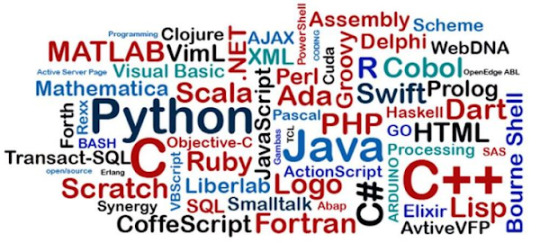
Các ngôn ngữ lập trình
Tại Sao Ngôn Ngữ Lập Trình Quan Trọng?
Ngôn ngữ lập trình là nền tảng của mọi sản phẩm công nghệ mà chúng ta sử dụng hàng ngày, từ ứng dụng trên điện thoại, website, đến các hệ thống quản lý doanh nghiệp. Dưới đây là vai trò chính của chúng:
Phát triển phần mềm và ứng dụng: Các ngôn ngữ lập trình như Java, Swift, hay Kotlin được dùng để xây dựng ứng dụng di động và phần mềm.
Xây dựng website: HTML, CSS, và JavaScript là bộ ba không thể thiếu để tạo ra các trang web hiện đại.
Phân tích dữ liệu và AI: Python và R là lựa chọn hàng đầu cho khoa học dữ liệu và học máy.
Tự động hóa: Ngôn ngữ lập trình giúp tự động hóa các tác vụ lặp đi lặp lại, tiết kiệm thời gian và nguồn lực.
Học ngôn ngữ lập trình không chỉ mở ra cơ hội việc làm mà còn rèn luyện tư duy logic và khả năng giải quyết vấn đề.
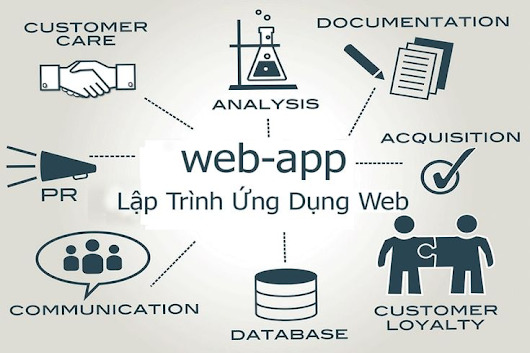
Ứng dụng của ngôn ngữ lập trình
Top 5 Ngôn Ngữ Lập Trình Phổ Biến Nhất 2025
Dựa trên nhu cầu thị trường và xu hướng công nghệ, dưới đây là danh sách các ngôn ngữ lập trình được sử dụng nhiều nhất hiện nay:
1. Python
Python nổi tiếng với cú pháp đơn giản, dễ học, và tính linh hoạt. Nó được sử dụng rộng rãi trong khoa học dữ liệu, trí tuệ nhân tạo, học máy, và phát triển web (với framework như Django, Flask).
Ưu điểm: Dễ học, cộng đồng lớn, thư viện phong phú.
Ứng dụng: Google, Netflix, và Spotify đều sử dụng Python.
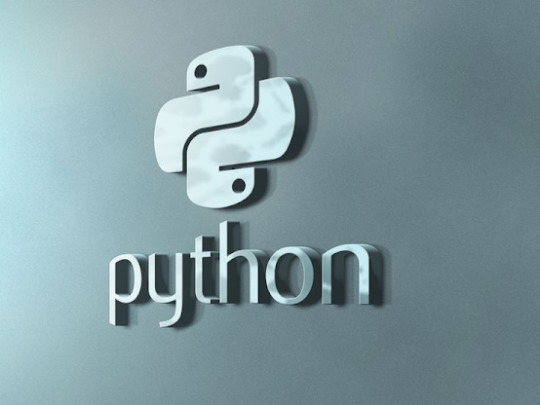
Python
2. JavaScript
JavaScript là “vua” trong phát triển web, giúp tạo ra các trang web tương tác, động. Với sự hỗ trợ của các framework như React, Angular, và Vue.js, JavaScript ngày càng phổ biến.
Ưu điểm: Chạy trên mọi trình duyệt, linh hoạt.
Ứng dụng: Facebook, Twitter, và các website lớn đều dựa vào JavaScript.
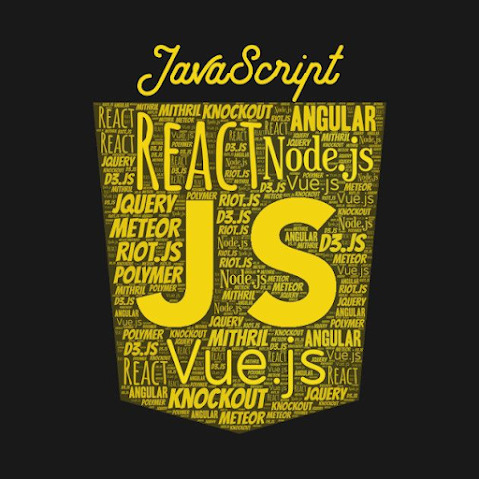
JavaScript
3. Java
Java là một ngôn ngữ lập trình mạnh mẽ, được sử dụng rộng rãi trong phát triển ứng dụng doanh nghiệp, ứng dụng Android, và hệ thống backend.
Ưu điểm: Độc lập nền tảng, bảo mật cao.
Ứng dụng: Các hệ thống ngân hàng, thương mại điện tử lớn.
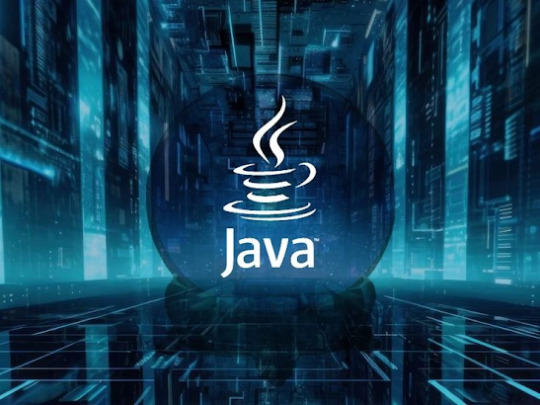
Java
4. C#
C# được phát triển bởi Microsoft, thường dùng trong phát triển trò chơi (với Unity), ứng dụng Windows, và hệ thống doanh nghiệp.
Ưu điểm: Hiệu suất cao, tích hợp tốt với hệ sinh thái Microsoft.
Ứng dụng: Các trò chơi như Among Us được xây dựng bằng C# và Unity.
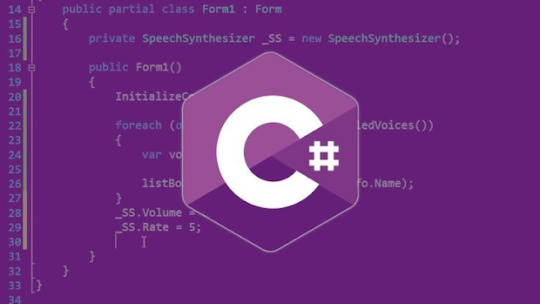
C#
5. TypeScript
TypeScript là phiên bản mở rộng của JavaScript, bổ sung tính năng kiểm tra kiểu dữ liệu, giúp mã code an toàn và dễ bảo trì hơn.
Ưu điểm: Tăng cường hiệu suất cho các dự án lớn.
Ứng dụng: Các dự án web quy mô lớn như những dự án của Microsoft và Google.
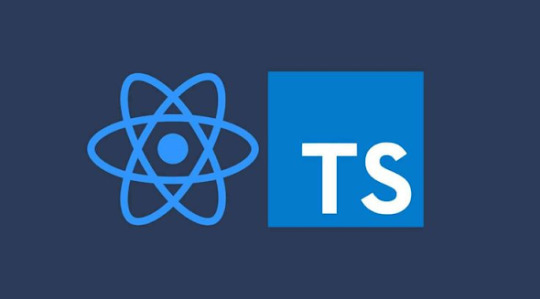
TypeSCript
Làm Thế Nào Để Chọn Ngôn Ngữ Lập Trình Phù Hợp?
Việc chọn ngôn ngữ lập trình phụ thuộc vào mục tiêu nghề nghiệp và sở thích cá nhân. Dưới đây là một số gợi ý:
Nếu bạn muốn làm phát triển web, hãy bắt đầu với JavaScript hoặc TypeScript.
Nếu bạn yêu thích trí tuệ nhân tạo hoặc khoa học dữ liệu, Python là lựa chọn lý tưởng.
Nếu bạn hướng đến phát triển ứng dụng di động, hãy học Java hoặc Swift.
Nếu bạn muốn làm trò chơi, C# và Unity là bộ đôi hoàn hảo.
Ngoài ra, hãy cân nhắc:
Cộng đồng hỗ trợ: Các ngôn ngữ lập trình như Python và JavaScript có cộng đồng lớn, dễ tìm tài liệu học.
Nhu cầu thị trường: Kiểm tra các tin tuyển dụng để biết ngôn ngữ lập trình nào đang được săn đón.
Tính dễ học: Python thường được khuyên dùng cho người mới bắt đầu.

Làm thế nào để chọn ngôn ngữ phù hợp
Kết Luận
Ngôn ngữ lập trình là chìa khóa mở ra thế giới công nghệ, từ việc xây dựng website, ứng dụng, đến phát triển trí tuệ nhân tạo. Việc nắm bắt ngôn ngữ lập trình là gì và học các ngôn ngữ lập trình phổ biến như Python, JavaScript, Java, C#, và TypeScript sẽ giúp bạn tiến xa trong sự nghiệp. Hãy xác định mục tiêu, chọn ngôn ngữ lập trình phù hợp, và bắt đầu hành trình chinh phục công nghệ ngay hôm nay!Thêm chút động lực
🚀 Java Highlight – Nơi chia sẻ kiến thức lập trình hiệu quả và dễ hiểu! Tìm hiểu về các ngôn ngữ lập trình phổ biến, đặc biệt là Java, qua những bài viết chất lượng, ví dụ thực tế và hướng dẫn rõ ràng.
👉 Khám phá thêm tại: Java Highlight
#JavaHighlight#NgonNguLapTrinhLaGi#TopNgonNguLapTrinh#HocLapTrinhJava#LapTrinhChoNguoiMoi#LapTrinhWeb#JavaCanBan#LapTrinhHieuQua#CodingVietnam#DevHocCode#LapTrinhTuHoc
1 note
·
View note
Text

The journey to mastering full-stack development often begins with choosing the right combination of technologies. For many developers, Python, Vue.js, and PostgreSQL form a powerful and versatile stack. This trio provides a robust backend, a dynamic front end, and a reliable database. Whether you’re a budding developer enrolled in an FSD Python course or a seasoned programmer exploring new frameworks, this guide will provide the foundational steps to set up a full-stack project.
Why Choose Python, Vue.js, and PostgreSQL?
Python: Known for its simplicity and versatility, Python is a favorite for backend development. Frameworks like Flask and Django make it easy to build scalable APIs and web applications.
Vue.js: Vue.js is a progressive JavaScript framework for building user interfaces. Its simplicity, flexibility, and reactive components make it ideal for crafting modern, dynamic frontends.
PostgreSQL: As one of the most advanced open-source relational database systems, PostgreSQL is renowned for its scalability, reliability, and extensive feature set.
Step 1: Plan Your Project Structure
In a standard full-stack project using Python, Vue.js, and PostgreSQL, the project structure is typically organized into several main directories. The backend directory contains the Python-based backend code, which could use frameworks like Django or Flask. The frontend directory holds the Vue.js frontend code and is responsible for the user interface. The database directory includes scripts and configuration files for setting up and managing the PostgreSQL database. The environment directory stores configuration files, such as environment variables and deployment settings. Finally, the docs directory is dedicated to documentation and notes related to the project. This structure ensures clarity and separation of concerns, making the project easier to manage and scale.
Step 2: Set Up the Backend with Python
Choose a Python Framework:
Flask: Lightweight and flexible for simple APIs.
Django: A full-fledged web framework with built-in features for authentication, ORM, and more.
Create the Virtual Environment:
Using virtual environments ensures project dependencies remain isolated, a key concept covered in any Python FSD curriculum.
Install Necessary Packages:
For Flask: Flask, Flask-Cors, and SQLAlchemy.
For Django, use core Django packages and DRF (Django Rest Framework) for API handling.
API Design:
Develop RESTful endpoints to handle CRUD operations.
Implement authentication mechanisms like JWT for user management.
Step 3: Develop the Frontend with Vue.js
Set Up the Vue.js Environment:
Use Vue CLI to scaffold your application. This creates a starter project with essential configurations.
Design Components:
Break down your application into modular components (e.g., header, footer, forms).
Use Vue’s data-binding and state management to handle user interactions.
API Integration:
Axios or Fetch can be used to connect the Vue.js frontend with your Python backend.
Styling:
Choose between frameworks like Vuetify, Tailwind CSS, or Bootstrap to style your application.
Step 4: Configure the PostgreSQL Database
Install PostgreSQL:
Ensure PostgreSQL is installed and running on your system. Tools like pgAdmin simplify database management.
Set Up the Database:
Define your schema and relationships. Django’s ORM or Flask’s SQLAlchemy can streamline this process.
Database Connection:
Configure your backend to connect to PostgreSQL using libraries like psycopg2.
Migrations:
Use migration tools provided by your framework (e.g., Django’s migrate command) to keep your database schema synchronized.
Step 5: Link the Frontend and Backend
Cross-Origin Resource Sharing (CORS):
Enable CORS in your backend to allow API requests from your frontend.
Environment Variables:
Use .env files to securely manage API keys, database credentials, and other sensitive information.
Serve the Frontend:
Deploy your Vue.js application and configure the backend to serve the frontend (or use a separate web server).
Step 6: Deployment
Containerization:
Use Docker to containerize your application for consistent deployment across environments.
Hosting Platforms:
For the backend, consider platforms like Heroku, AWS, or Azure.
For the front end, platforms like Vercel or Netlify are excellent choices.
Database Hosting:
Host PostgreSQL on cloud platforms like AWS RDS or DigitalOcean for better scalability.
Conclusion
Setting up a full-stack project with Python, Vue.js, and PostgreSQL may seem complex initially, but with proper guidance and practice, it becomes a manageable and rewarding process. Whether you’re enrolled in a Python Full Stack Development Course or self-learning, this stack equips you with the tools to build modern, scalable web applications.
Each step in this guide provides a foundation for exploring and implementing advanced features like authentication, real-time updates, or cloud deployment. With persistence and curiosity, you’ll be well on your way to mastering full-stack development.
Contact Us:
Phone
+917338811773
+918925903732
Email: [email protected]
0 notes
Text
Why Hello Errors is the Best Web Designer in Bangalore for Modern Businesses

In a city as dynamic and tech-forward as Bangalore, a strong digital presence is essential for any business looking to make an impact. From startups in HSR Layout to enterprises in Whitefield, companies are constantly competing for online visibility — and that visibility starts with exceptional web design. If you're searching for the Best Web Designer in Bangalore, Hello Errors is the name that consistently rises to the top.
In this blog, we’ll explore why Hello Errors is the best choice for businesses in Bangalore looking to dominate the digital space with striking design, robust development, and innovative technology.
The New Era of Web Design in Bangalore
Bangalore is not just India’s IT capital — it’s a breeding ground for innovation, creativity, and digital disruption. Businesses are no longer satisfied with static brochure websites. They now demand interactive, mobile-optimized, SEO-friendly, and AI-integrated websites that work as a business tool, not just an online presence.
This evolution in expectations has given rise to a demand for web designers who don’t just code — they think strategically. The Best Web Designer in Bangalore needs to blend creativity with functionality, aesthetics with analytics, and vision with execution. That’s where Hello Errors shines.
What Makes Hello Errors the Best Web Designer in Bangalore?
Unlike agencies that simply follow briefs, Hello Errors partners with you to build digital products that grow your brand, engage your audience, and increase conversions. Here are some reasons why Hello Errors is widely regarded as the Best Web Designer in Bangalore:
1. Purpose-Driven Design
Every design element at Hello Errors serves a purpose. From UX flow to typography, nothing is random. We create wireframes and prototypes that guide users naturally from interest to action — ensuring your site not only looks good but converts leads into loyal customers.
2. Speed & Performance Optimization
Google favors fast-loading, well-optimized websites. We ensure your site performs flawlessly across all devices and platforms. Our web solutions include:
Lazy-loading for images
Code splitting
Compressed CSS/JS
Mobile responsiveness
Page speed optimization (Core Web Vitals ready)
3. Advanced SEO Integration
What’s the point of a beautiful website if nobody finds it? At Hello Errors, every project is built with on-page SEO in mind — from meta tags to alt text, URL structure to schema markup. This SEO-first mindset is a big reason we’re the Best Web Designer in Bangalore.
4. AI and Machine Learning Capabilities
From chatbots to predictive personalization, we integrate AI to help businesses better engage and understand their users. If you're looking to future-proof your digital platform, Hello Errors provides cutting-edge tech stacks that support growth and automation.
5. Custom Web and App Development
We don’t believe in one-size-fits-all templates. Our developers create custom web platforms tailored to your brand, business model, and industry standards. We also develop hybrid and native apps that offer consistent performance across devices.
Web Design as a Business Growth Strategy
For Hello Errors, web design is more than aesthetics — it’s a strategic lever for growth. As the Best Web Designer in Bangalore, we focus on:
Increasing conversion rates
Enhancing brand perception
Boosting organic search rankings
Improving customer retention
This approach transforms your website into a revenue-generating asset — not just an online placeholder.
Our Design Stack and Tech Toolkit
We use industry-leading tools and frameworks to build high-performance, scalable, and secure websites:
Frontend: HTML5, CSS3, React.js, Vue.js
Backend: Node.js, Laravel, Django
CMS: WordPress, Strapi, Webflow
Design Tools: Figma, Adobe XD, Sketch
DevOps: GitHub, Docker, Netlify, Vercel
AI/ML: TensorFlow, OpenAI APIs, chatbots
This diverse toolkit allows us to deliver bespoke solutions, whether you're building a corporate website, eCommerce platform, or interactive SaaS dashboard.
Who We Serve
Hello Errors works with clients across sectors:
Startups & Tech Companies
Healthcare & Wellness Providers
Educational Institutions
Hospitality & Luxury Brands
Ecommerce & Retail Businesses
Regardless of size or industry, every client gets access to the same strategic thinking, technical depth, and visual excellence that has made us the Best Web Designer in Bangalore.
Commitment to Collaboration
One of Hello Errors' standout traits is our collaborative culture. We work hand-in-hand with your team through:
Discovery sessions
Weekly design sprints
Feedback loops
Prototyping workshops
This ensures you’re not just a client — you’re a co-creator in building a platform that reflects your vision.
Post-Launch Support & Scalability
A great website isn’t “done” at launch. It evolves.
That’s why Hello Errors provides ongoing support, performance monitoring, content updates, and feature expansions. We help your digital assets scale with your business.
Client Snapshot: Transforming a Local Retailer into an Online Brand
One of our clients, a boutique fashion retailer in Bangalore, had no online presence. Within 60 days of collaborating with Hello Errors:
A sleek, mobile-optimized ecommerce site was launched
Integrated payment gateways and cart features added
SEO optimization boosted the site to page 1 for branded keywords
Monthly sales tripled in the first quarter
The client now refers to Hello Errors as the Best Web Designer in Bangalore — and we proudly accept that compliment.
Call to Action: Build Your Digital Future with Hello Errors
Looking for the Best Web Designer in Bangalore who combines creativity, strategy, and innovation?
Let’s talk.
Whether you’re starting a business or scaling one, Hello Errors has the design vision, tech power, and digital expertise to help you win online.
👉 Visit us at: https://helloerrors.in 📩 Book a free consultation 🛠️ Let’s build something amazing — together!
Final Thoughts: Design Is the Face of Your Brand
Your website is your digital storefront, brand ambassador, and first impression — all rolled into one. If it doesn’t communicate trust, value, and relevance in the first few seconds, you’ve already lost potential customers.
That’s why choosing the Best Web Designer in Bangalore is critical to your business’s success. Hello Errors brings passion, precision, and performance to every project, helping your brand make a lasting digital impact.
#BestWebDesignerInBangalore#HelloErrors#WebDesignBangalore#UIUXDesignIndia#WebsiteDevelopment#AppDevelopmentBangalore#SEOExpertsBangalore#AIWebDesign#ModernWebDesign#DigitalTransformationIndia#CustomWebDevelopment
0 notes